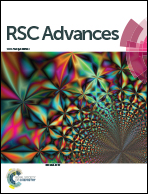Ni-doped ZnO nanotower arrays with enhanced optical and field emission properties
Abstract
Aligned Ni-doped ZnO nanotower arrays have been grown on a silicon substrate with a ZnO film by a thermal evaporation method. The source temperature was exploited to control the morphologies of ZnO nanostructures. The Ni-doped ZnO nanotower arrays exhibit very strong and sharp ultraviolet emissions from the band gap, while almost no green emission is attributed to singly ionized oxygen vacancies in the cathodoluminescence spectrum. The Ni-doped ZnO nanotower arrays with large alignment variation display broadband and omnidirectional antireflection properties due to the gradual index profile. In addition, Ni-doped ZnO nanotower arrays have good geometric structures and appropriate density for field emission, which led to very low turn-on and threshold fields. The present work can provide insight into further structural design for nanostructured optical and electrical applications.


 Please wait while we load your content...
Please wait while we load your content...